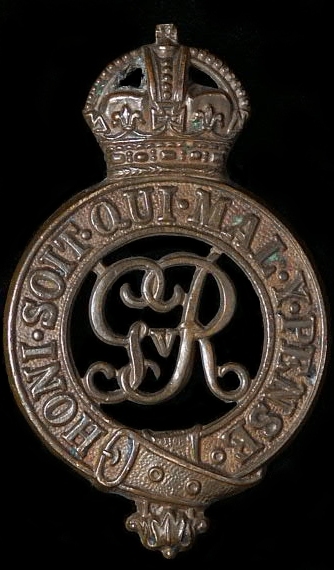SON OF WILLIAM CRAWFORD, 22 MARKET ST., GREENOCK, AND THE LATE MARTHA HAMILTON.. The letters in which Harriet Johnson tells her boyfriend, William Crawford, of her longing for him, were found by chance in a box of official Army records by staff at the National Archive in Kew. The discovery is very rare because private correspondence of military personnel was normally returned to families. Crawford, a roofer by trade, was enlisted in the Household Battalion of the Household Cavalry in 1917. He was killed in France on February 8 1918, aged 26. A month earlier, in a letter dated January 9 1918, Miss Johnson wrote: "I always think about you and wish you were here. How I wish this war was over. We are now beginning to know that there is a war as I don't think we realised it at the beginning." In a letter dated January 29 1917, Miss Johnson wrote: "Well dear Will I am glad that you love me. I want your love because I love you. I often think of you and all that passed between us. But never mind my Dear Will I am not sorry. I only wish that you were here now. I often long for you. I don't know when I shall see you again but I do hope it will very soon." Related Articles Women war munitions workers seek medal 21 Jun 2008 In another, undated, letter believed to have been sent days before his death, she wrote: "Remember there is always one little girl who will always pray for your safe return." It is not known whether Miss Johnson went on to marry another man
From Inverkip War Memorial Project
William was born on the 13th August 1892 at 21 Dalrymple Street, Stranraer. He was the fifth of eight children of William, a labourer and Martha Hamilton who were married in Stranraer in April 1882. The eldest and youngest children sadly died in infancy.
In February 1901, when William was just 8 years old, his mother died from a post-partum haemorrhage. The 1901 census shows William snr, five sons and Agnes Kirkwood, a boarder, living at Greenvale Street, Stranraer.
Just eight weeks after his wife's death, William snr married Maggie Berry, 16 years his junior, who also lived at Greenvale Street, a few doors down at no.7.
What happened to the children after this we can only imagine from the letter of John McDowall, William Jnr's Uncle. We know that the 1911 census shows he was living at Ferguson Place, Inverkip and working as a forester/roofer.
William Snr. was living as a boarder at 2 Princes Street, Stranraer with Agnes Johnstone, her family and other boarders. His occupation was still a labourer.
William Jnr. enlisted for service in the Household Battalion in April 1917. He left Southampton for France in October of that year. He was reported as wounded on 29th January 1918 and died on 5th February at No.8 Casualty Clearing Station (even though he is listed as 8th February on the Inverkip War Memorial).
William's Uncle died in December 1919. A few months after writing the heart-rending letter regarding his nephew's commemorative scroll and plaque.
William snr died in July 1930 at 45 Dalrymple Street. His death was registered by his brother, Peter Crawford. His wife, Trooper William Crawford's step-mother, died in August 1941 at 71 Hanover Street, Stranraer. In 1928, she had re-married.
What remains a mystery is why on Trooper William Crawford's commemorative certificate it says 'son of William Crawford, Market Street, Greenock' and the Uncle's letter in 1919 states he didn't know where he was. On a copy of the statement of next of kin for soldiers, 'unknown to me' is the contact details for his father and siblings.
Letters from Hettie Johnson, Trooper William Crawford's girlfriend, were found a few years ago. This was a very rare discovery and these would usually be returned to the serviceman's family. She writes:
'I always think about you and wish you were here....Goodnight dear Will and God bless you forever. May Him above guard over you and through all dangers and be with us both until we meet again.'
Trooper William Crawford, as it says on his headstone 'A son of Galloway. He gave for humanity that the race should be free.'
His name liveth for evermore.
Buried Duisans British Cemetery, Etrun, France. Grave Reference V. E. 56.



